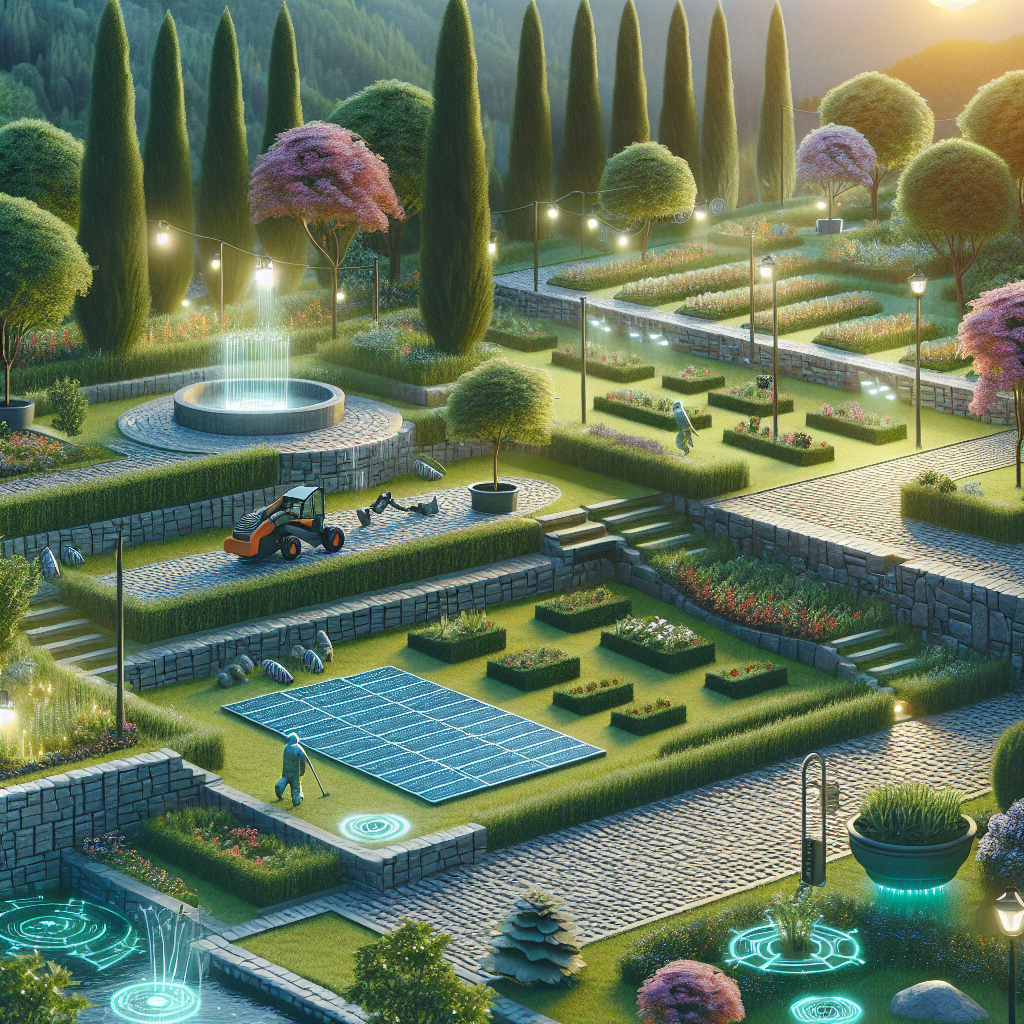Introduction to Hardscape Landscaping
Hardscape landscaping involves the integration of non-living elements into outdoor spaces, complementing the vegetation and creating functional and visually appealing designs. From pathways to patios, hardscaping plays a crucial role in defining the structure and organization of landscapes.
Definition and Purpose
According to John Smith, a Landscape Architect, 'Hardscaping adds structure and organization to outdoor spaces, creating harmony between the natural and built environment.' The primary purpose of hardscaping is to enhance the aesthetics, functionality, and sustainability of outdoor areas.
Importance of Hardscaping in Landscape Design
Jane Doe, a Hardscape Designer, emphasizes, 'Choosing the right materials for hardscaping is essential for long-term aesthetics and functionality.' Hardscape elements provide durability, low maintenance solutions, and increased property value, making them indispensable in contemporary landscape design.
Elements of Hardscape Landscaping
Pavers and Stepping Stones
Pavers and stepping stones are popular hardscape elements used to create pathways, patios, and outdoor living spaces. They come in a variety of materials such as concrete, stone, and brick, offering versatility in design and durability.
Retaining Walls
Retaining walls serve both functional and aesthetic purposes in hardscape design. They help prevent soil erosion, define garden beds, and create elevation changes, adding dimension to the landscape.
Outdoor Kitchen and Fire Pits
Outdoor kitchens and fire pits are hardscape features that extend the functionality of outdoor spaces. They provide areas for cooking, entertaining, and relaxation, transforming yards into inviting living areas.
Water Features
Water features like fountains, ponds, and waterfalls introduce calming elements to landscapes. They enhance the sensory experience, attract wildlife, and contribute to a tranquil ambiance.
Arbors and Pergolas
Arbors and pergolas add architectural interest to outdoor settings. These structures provide shade, define boundaries, and support climbing plants, blending functionality with aesthetics.
Design Principles in Hardscape Landscaping
Balance and Symmetry
Achieving balance and symmetry in hardscape design creates a sense of harmony and stability. By distributing visual weight evenly and mirroring elements, designers can create cohesive and pleasing outdoor spaces.
Unity and Focal Points
Creating unity through consistent themes and focal points draws the eye and ties the hardscape elements together. Focal points, such as sculptures or water features, contribute to visual interest and guide the viewer through the landscape.
Scale and Proportion
Considering scale and proportion ensures that hardscape elements relate harmoniously to the surrounding environment. Proper scaling prevents elements from overwhelming the space or appearing insignificant.
Materials and Texture
Selecting appropriate materials and textures is vital in hardscape design. Combining contrasting textures and materials adds visual interest and depth to the landscape, enhancing its overall aesthetic appeal.
Case Studies in Hardscape Landscaping
Transforming a Small Urban Garden with Hardscaping
In a small urban garden, the strategic use of pavers, raised planters, and trellises transformed a cramped space into a multifunctional oasis. The incorporation of vertical elements maximized the limited square footage, demonstrating the impact of hardscaping in small areas.
Enhancing Curb Appeal with Creative Hardscape Features
By adding a decorative walkway, a custom-designed patio, and a charming entry arbor, a suburban home's curb appeal was significantly enhanced. The cohesive hardscape features not only boosted the property's visual appeal but also improved its overall value.
Integrating Hardscape Elements in a Large Estate Landscape
In a sprawling estate landscape, the integration of water features, expansive patios, and elegant pergolas created distinct outdoor living areas. The hardscape elements seamlessly blended with the natural surroundings, enhancing the estate's grandeur and functionality.
Benefits of Hardscape Landscaping
Low Maintenance and Durability
Hardscape elements require minimal upkeep compared to traditional landscaping features like grass and plants. With proper installation and materials, hardscaping can withstand adverse weather conditions and heavy foot traffic.
Increased Property Value
Well-designed hardscape features can significantly increase the value of a property. According to industry experts, investing in quality hardscaping can offer a high return on investment and attract potential buyers.
Functional Use of Outdoor Space
Hardscape elements extend the functional use of outdoor spaces, providing areas for gathering, dining, and recreation. Patios, fire pits, and outdoor kitchens offer homeowners opportunities to enjoy their landscapes year-round.
Sustainable and Eco-Friendly Design
Hardscaping contributes to sustainable design practices by reducing water consumption and promoting environmental stewardship. Permeable pavers, rain gardens, and drought-resistant plants are examples of sustainable hardscape solutions.
Industry Insights on Hardscape Landscaping
'Hardscaping adds structure and organization to outdoor spaces, creating harmony between the natural and built environment.' - John Smith, Landscape Architect
'Choosing the right materials for hardscaping is essential for long-term aesthetics and functionality.' - Jane Doe, Hardscape Designer
Conclusion
Hardscape landscaping offers a wealth of benefits, from enhancing outdoor aesthetics to increasing property value and promoting sustainability. By incorporating elements like pavers, retaining walls, water features, and arbors, landscape designers can create cohesive and inviting outdoor environments that harmonize with nature.
Call to Action
To explore the possibilities of hardscape landscaping further and engage in professional dialogue on innovative design techniques, we encourage landscape architects, designers, and enthusiasts to continue researching and experimenting with hardscape elements in their projects.
Topics




